The latest strange turn in the life of Charles Billich
It’s the $2 million-plus art heist you’ve never heard of, the claimed wrong flamboyant Sydney painter has fought to put right for 14 years.
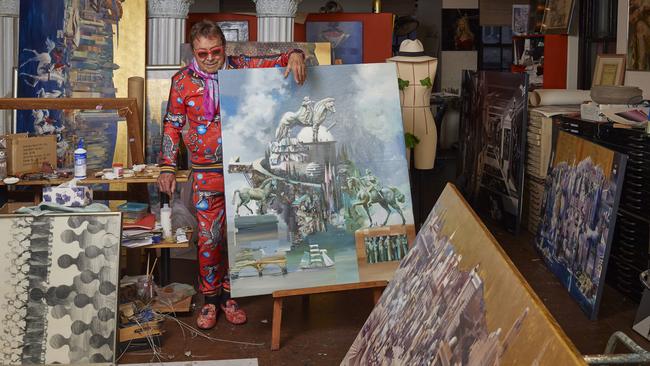
No one was happier than artist Charles Billich when Croatia, the land of his youth and lost dreams, declared independence in that heady European summer of 1991 while the communist dominoes toppled one by one. He bounced around the home he shared with his socialite wife Christa and the paintings that made them millions, wild with joy. “I’d never seen him so excited,” Christa remembers. They opened champagne, of course.
That’s saying something because Billich, now 88, was quite the excitable boy. Whether at work or play – and my word, didn’t he like to play – there were few half-measures. Like his sometimes haunting, often jarring surrealist art he was full-on, full time. But that was before cancer struck, followed in short order by Covid, contracted in January during a disastrous trip to the US to present Donald Trump with an unsolicited portrait. Friends say the couple’s gilded bubble burst, leaving them as flat as day-old fizz.
Billich, his hazel eyes twinkling, begs to differ. He’s dangerous, 110 per cent, he declares, as Christa serves the drinks in their Sydney penthouse. We’re talking about his legacy, how determined he is to build it in the time he has left. “I’ve become aware of the shortness of life,” he says breezily. “I have things to do.”
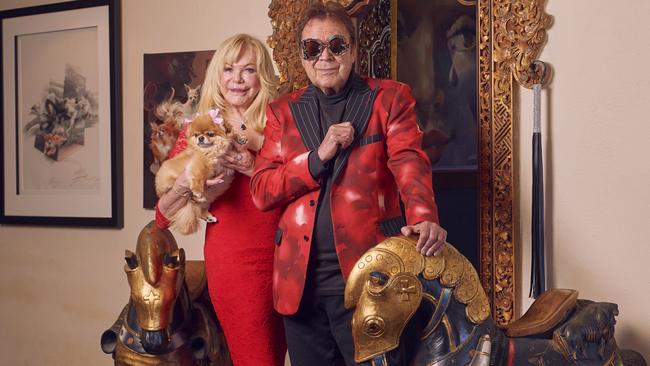
Christa too. Aged 77, the one-time reality TV star is his fifth wife, the one who hung in for 36 years against all expectations, equal partner in the gallery business as well as a famously open marriage. She’s bought in wholeheartedly to his bucket-list project, having suffered as acutely as he did from Covid and its lingering effects. They have acquired a share in a rambling estate on Melbourne’s outskirts to house the nascent Billich Foundation – a not-for-profit to support up-and-coming artists and preserve the works by her husband that the major public galleries won’t touch, much to the couple’s frustration.
Billich will work there, away from the, ahem, distractions of the city. “I am at peace with the fact that I will never complete my mandate. I will die before I paint everything that I want to,” he says. “I need to present a little script for the rest of my working days: what to paint, how to be selective with that, with all the pressures I have around me.”
Above all, there’s his unfinished business in Croatia. He is determined to put that right also.
Billich was 21 when he fled in 1954 with Tito’s secret police in pursuit; it fired his lifelong loathing of communism. The breakup of Yugoslavia all those years later was much more than a moment for him to savour and celebrate in distant Australia: he wanted to do his bit to help. Newly constituted Croatia had gone to war with Serbia, unleashing bloodshed that spilled over into neighbouring Bosnia, horrifying the world. Keen to be involved in the rebuilding, he returned to his childhood home of Lovran on the picturesque Istrian coast, bordering Italy, with an open cheque book. The local sharks circled.
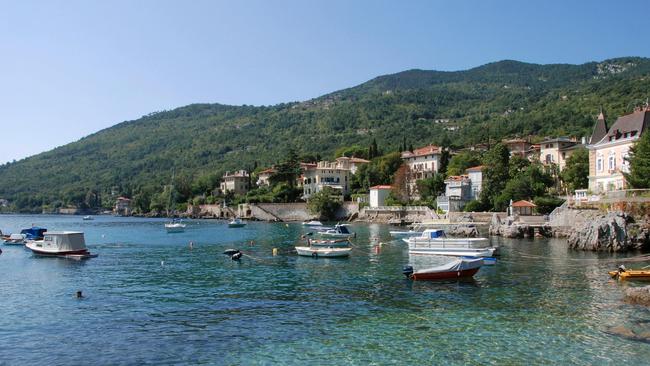
Among the deals he was offered was the lease on a derelict 12th-century tower in the historic town centre. The then mayor said it would make a fine art gallery – if only the municipality had the money to fix the crumbling structure. The idea appealed to Billich because his father, Karlo, had been in tourism in Lovran, managing restaurants catering for Italian holidaymakers. He threw the equivalent of $250,000 at the restoration – a tidy sum in the early ’90s – and stocked the showrooms with 87 of his own artworks, many valued in the tens of thousands of dollars. The 60 handcrafted model ships he donated to give expression to the project’s nautical theme took the outlay to nearly $2 million. (Billich offered it as a gift, not an investment; there would be no return.)
In consideration, he says he was assured that council rent and taxes would be waived for 10 years; evidently, it never happened. Unbeknown to him, the purported debt started to pile up. Billich got the shock of his life when, in 2008, he was brusquely informed the entire collection had been confiscated in lieu of 429,066 Croatian kuna (about $85,000) in unpaid charges and interest. He had 30 days to vacate the premises, the municipality said. He tried to negotiate but the mayor who’d enticed him to spend had moved on. The next mayor, Edvard Primozic, insisted the works – including original oils, mixed media reproductions, sketches and a series of 12 paintings of Croatian “greats” especially prized by Billich – would be sold to pay what he owed.
Not for the first time, he felt utterly betrayed. So what to do? Christa — who now puts the worth of the original collection at between $2m and $3m at today’s prices — urged him to write off the loss, and Lovran while he was at it. She had always been sceptical about the property “steals” he had snapped up. A villa for $40,000? The historic theatre he was to have acquired on putting down a $100,000 deposit? “It was a scam and they were all in on it,” she fumes. “I said to Billich, forget about it, concentrate on work, have some fun, but let it go because the money is gone. You’ll never get it back, I told him. Don’t let it eat you up, OK.”
Like everyone else in their orbit, Christa calls her husband by his surname. They met in 1985 in Melbourne, where he was well known as a man about town. When he proposed, he neglected to mention that he was engaged to another woman, Christa says, shrugging. “He was always a bit of a playboy. I knew he wasn’t going to change.” The marriage, her first, was never going to be conventional. They used to give each other licence to pursue casual affairs – that was before age and ill-health caught up with them – but there were limits. One rule they each profess to have abided by: no lasting entanglements.
Another established parameter to their partnership was that while Billich let loose his imagination in the studio or at the easel in their living room, Christa focused steely-eyed on the business. She’s the undisputed boss of Billich Inc, in control of the proprietary rights to every artwork, the five-and six-figure pricing, the relentless self-promotion that helps explain their readiness to impart the juicy details of a not-so-private life.
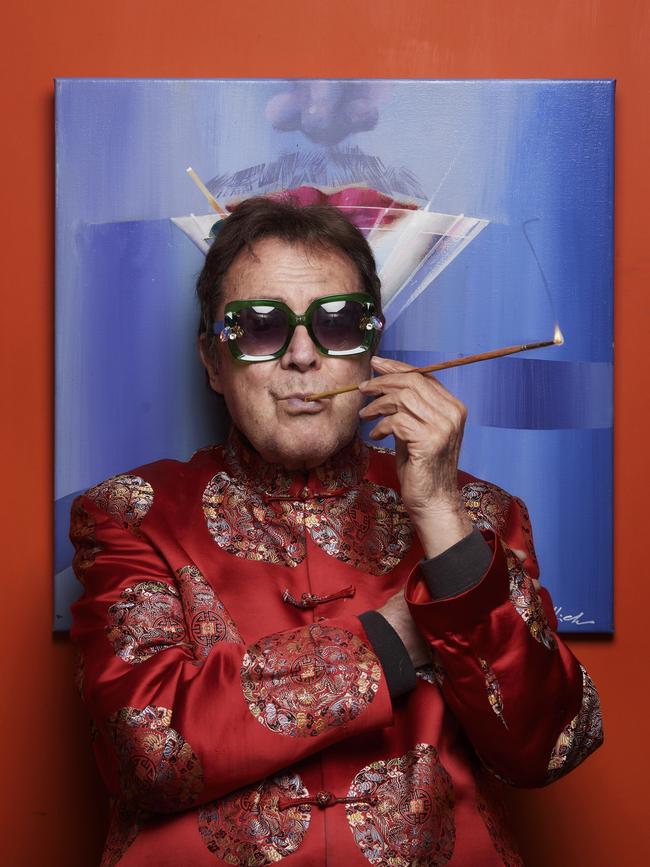
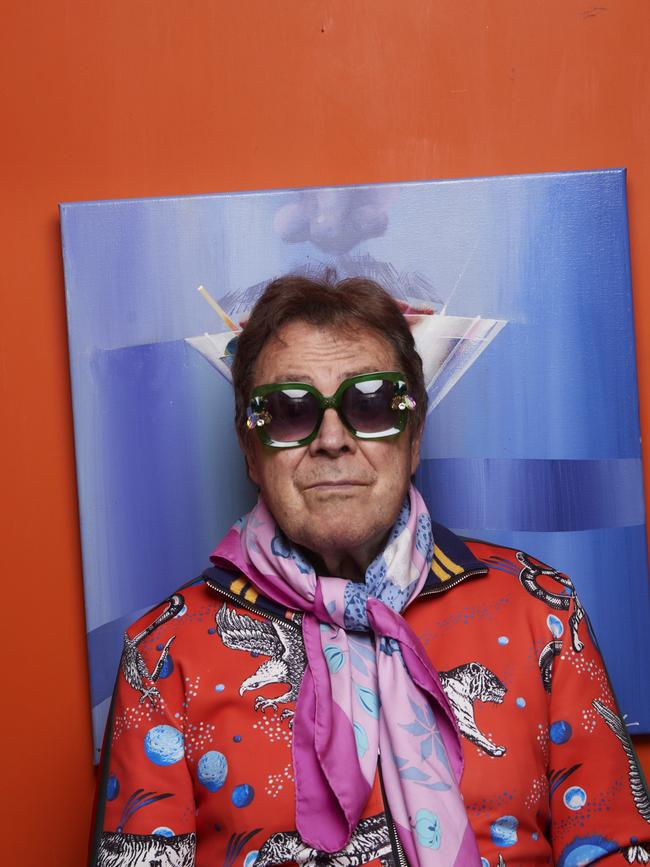
She had studied jewellery design before leaving behind an unhappy family home in Germany, aged 20. She saw an ad for sunny Australia and thought, why not? Landing in Melbourne in 1966 with only $100 to her name, she spoke barely a word of English. Still, she found work in a deli in St Kilda, before persuading a nearby jeweller to take her on. By the time Billich came on the scene she owned a thriving jewellery store in Collins St in the CBD. With her well-honed sense for an opportunity, she persuaded him to open his own gallery, establishing him as one of the first artists in Australia to cut out commission-hungry dealers.
The Billiches relocated to Sydney in 1995, set up shop in The Rocks and paid $450,000 for the 12th-floor penthouse in Darlinghurst. Back then, the price seemed rich for a three-bedroom flat in what was a seedy part of town. But Christa didn’t blink at paying it: she was sold on the 300-degree views of the harbour and city. By one estimate, the couple’s net worth today tops $60 million.
Billich professes to care not a jot for what the art establishment has to say about him, which generally isn’t flattering. The Australian’s national art critic, Christopher Allen, maintains there’s a reason his paintings aren’t held by a single major public gallery: they’re not very good. “We are told that his work is ‘surreal’ and ‘avant-garde’. In reality this accumulation of clichés is a fairly accurate reflection of work that is itself a confection of kitsch motifs and cheap special effects,” Allen tells the magazine. “Billich’s work … has never come close to being taken seriously by any competent critic or connoisseur.”
“They turned on me. They had my money, they didn’t want me around anymore”
Let them carp, the artist says. If he’s portrayed as being the populist creation of his wife’s hype, so be it. His cityscapes have been hung in the White House and at United Nations HQ in New York and he’s chuffed that the late Hugh Hefner had one of his nude studies up in his bedroom in the Playboy mansion. A portrait of the canonised Australian nun Mary MacKillop went into Pope John Paul II’s private study in the Vatican. Christa says, unverifiably, that a Japanese collector once paid $1.5m for a series of original oils, while billionaire Arab oil princes and European royalty dot her closely attended client list.
If true, it’s not bad for a self-taught painter and occasional sculptor whose first job off the boat was lining up other immigrants to work on the Snowy Mountains Scheme. Billich, though, would never truly leave behind his birthplace. Lovran’s streets held terrible memories he couldn’t shake. As a boy in World War II, he had witnessed German troops pulling bodies out of the foibe – volcanic sinkholes – around the town, among them murdered members of his own family, including uncles, aunts and cousins. Communist death squads had done most of the killing, targeting those suspected of collaborating with the occupying Axis forces. The Billich family was marked out because Karlo had been conscripted into the Italian army at the outbreak of the war; he rose to officer rank and spent months away liaising with the Germans.
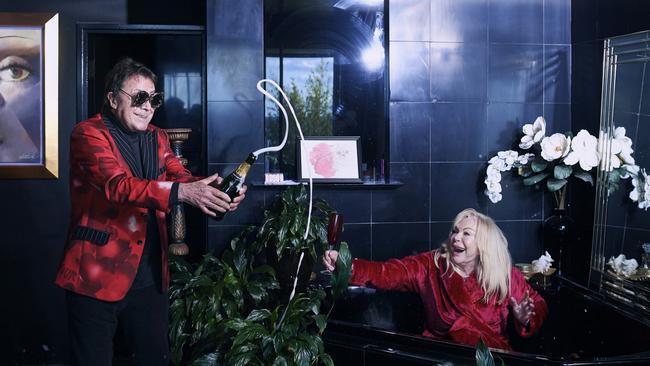
Billich believes there was an ideological dimension to his falling out with the municipality: relations turned icy after he started to ask questions about the World War II massacre sites, he says. Why weren’t the sinkholes marked with a memorial to the victims of the “red terror”? He would gladly fund one. “That’s when they turned on me,” he recalls. “There were a lot of ex-communist officials in the council and they didn’t want the truth to come out. They had my money, they didn’t want me around anymore.” Whatever the case, he got nowhere with his demands for answers about the seized artworks. Doors were slammed in his face wherever he turned.
Given his traumatic experiences growing up and coming of age in Lovran, you have to wonder how he could have failed to see what was coming. As a young man he’d fallen for an older woman who, by his account, turned out to be an informer for the secret police. He was already on their radar, he says, owing to the politically risqué tone of the entertainment magazine he ran as a side business and for penning articles critical of the regime for an Italian newspaper. In 1952, aged 19, he decided to escape to Italy and asked the woman to accompany him. But instead of meeting her to cross the border near Trieste, he was arrested and jailed for two years; she went on her merry way.
He escaped the country three years later, undertaking a hair-raising trek in winter through the mountains to Austria, first stop on the road to Australia – his second choice after the US, where McCarthyist suspicion had slowed resettlements.
When he returned to Croatia many years later, he cut a startling figure, “looking like a cross between an eccentric from London’s Soho and Crocodile Dundee,” a newspaper in the capital Zagreb reported. Again he trusted the wrong person. “Too trusting, always too trusting”, Christa hurrumphs. This time, his local business manager, a woman who commanded his complete confidence, joined the queue to fleece him. Billich had to go to a Croatian court in 2018 to obtain an order against her for the €200,000 ($296,000) she’d pocketed from selling an apartment behind his back. He is still waiting for her to pay up.
In a separate decision, in 2015, the court had given the green light for Lovran Municipality to auction his 36 seized artworks. Conveniently, the collection was valued at $85,000 – the sum the council claimed he owed over unpaid rent of the 12th-century tower in town. Christa complains that a prime 2m-wide oil painting by her husband displayed outside the mayor’s office is alone worth $150,000. Other works would fetch upwards of $60,000 if returned. “It was a joke,” she says of the court valuation. “A sick joke on Billich … punishing him for the good things he wanted to do.”
The 2015 auction was reported to have raised about 35,000 kuna – barely $7000.
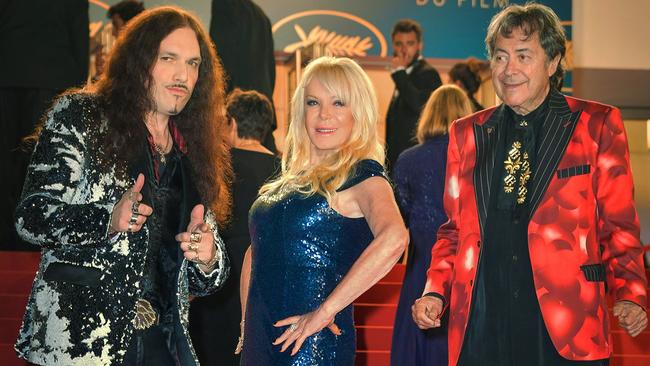
There matters might have rest had Steve Ravic not entered the frame. Ravic has become like a son to them. The filmmaker, who has a studio in Melbourne, could relate to the artist’s travails in the old country: his own parents had fled during the Cold War. In 2018, he approached Billich about participating in a documentary of his eventful life. Ravic had independent financing; he needed the Billichs’ time, not their money.
Christa’s scene-stealing appearance on the TV reality series Real Housewives of Sydney had given the couple’s profile another boost. She talked and talked about her facelifts, their swinging, and the champagne-drenched lifestyle that had made them darlings of the tabloids. There’s arguably something to the chatter that she has an ulterior motive in being so disarmingly open. “She will say anything to get her name in the papers,” sniffs one society matron who moves in their moneyed circle. “Anything to sell another painting.”
Some of the reported antics are certainly hard to credit. Consider this one about their nuptials. Billich is said to have made off with the female wedding photographer, spending the night with her, not the bride. “Absolutely, totally true,” Christa says nonchalantly, turning to him as he shifts uneasily on his chair. “You didn’t get in until 7am.”
“I want to cancel the memory of some of the evil things that happened to me”
To his credit, Ravic was determined to get past the “media noise” about their domestic arrangements and high living. And the more he got to know them, the more he was intrigued by what he came to see as the brazen theft of Billich’s art. “Being of Croatian heritage, I thought it was just wrong that this could have happened, when all he wanted to do was help the country,” says Ravic, 48. “I was pretty disgusted by it … angry, really.”
Ravic suggested trying to track down the seized works while doing legwork on the documentary in Croatia. From time to time rumours emerged of pieces turning up for sale in Europe. “I told Steve, sure, take a look if you want to,” Christa says. “But as far as I was concerned there was no point. We weren’t going to get anything back.”
Gradually, though, Ravic made progress. On the recommendation of the Australian embassy in Zagreb he contacted lawyer Don Markusic, an expatriate Australian who wasn’t afraid to rock the boat. Together, they combed thousands of pages of court transcripts, public records and newspaper files to determine exactly what had transpired.
After launching the doco Billich: Beyond the Canvas at the 2019 Cannes film festival, Ravic and Billich went on to Lovran intent on confronting new mayor Bojan Simonic, the third they had dealt with. Billich was stopped at the front door of the council chambers, and no one would speak to Ravic after he was grudgingly admitted. But useful leads were being shaken out. On a later trip, Ravic located a storeroom in the village containing a cache of 21 of the artworks. Billich immediately offered to buy them back, but the answer was no; the pieces were to be auctioned as part of a benefit to support Lovran’s sister town, Petrinja, which had been devastated by a earthquake.
Petrinja council later reported on its website that a “cheque” had duly arrived from Lovran, but no detail was provided. Ravic thinks he can account for another 13 works in the possession of the municipality. But that still leaves 55 artworks missing, as well as the model ships. “It’s like a brick wall,” he says. “You have to keep chipping away at it.” The paper trail has taken sinister turns. Recently, they uncovered the deeds of incorporation for a Croatian company falsely purporting to control the European rights to Billich’s artworks; it was the first that he or Christa had heard of it. The man behind it turned out to be a shady political operator in Zagreb. The Billiches have applied to deregister the bogus company.
Meanwhile, they have gained traction in the court of public opinion. Their campaign, And Justice for Billich, was taken up by the Croatian press thanks in part to the support of celebrity Marko Perkovic, singer of the country’s chart-topping hard rock act, Thompson. The European summer of 2021 brought another breakthrough. Ravic had fronted up at the council chambers in Lovran anticipating the usual brush-off. Except this time he managed to corner Simonic in a corridor. The startled mayor admitted he wasn’t fully across the detail of the dispute, but from what he knew, the council had acted lawfully. Ravic pressed him: would he at least agree to see the Billiches? Simonic said a “dialogue” might be possible. Ravic is currently back in Croatia planning their next move. And on September 28, after the magazine submitted a series of questions to English-speaking Simonic, the tone abruptly changed. The mayor confirmed that the municipality did, in fact, have 31 Billich works in its possession, and separately advised Ravic that an impending council meeting would consider what to do with them.
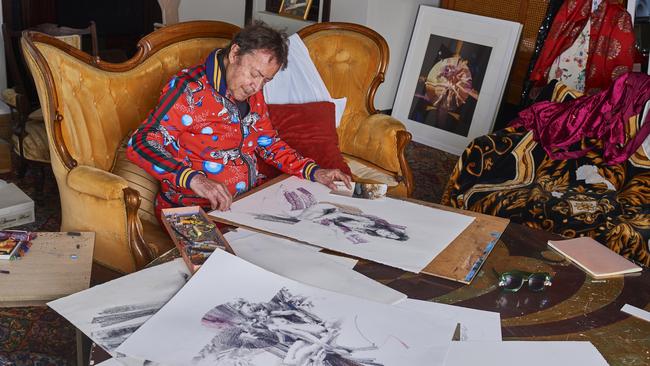
Ravic expects Simonic to invite the Billiches to buy back what remains of the collection, but he’s not holding his breath. “They will want money and that’s fine … Billich has always been happy to come to an arrangement,” Ravic says. “And, yes, I think this is encouraging, but our experience is that everything gets dragged out. The only reason they’re moving is because they’ve been backed into a corner … by the questions you have been asking. We’ll see where it goes from here.”
A heartened Billich is more determined than ever to keep up the pressure. He’s come too far to back down even though Christa is convinced they’d be better off if he did. Call it an old man’s obsession. “I want to cancel the memory of some of the evil things that happened to me and I still have faith in the regeneration of Croatia,” he says.
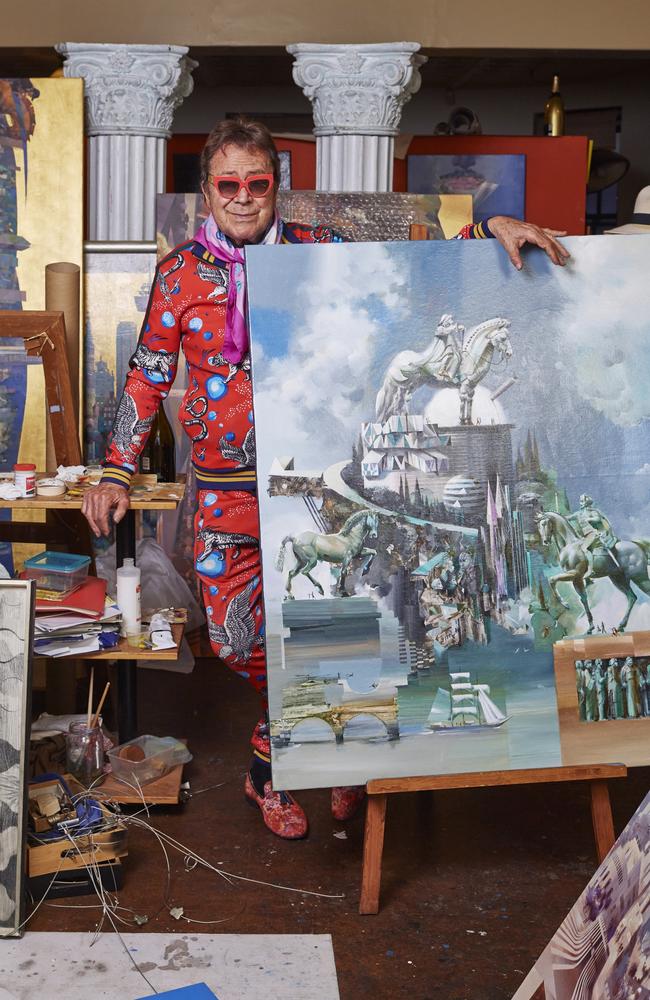
They continue to struggle physically. Christa might need surgery to have a cardiac pacemaker fitted and Billich, for all his bluster, is tired and short of breath – tell-tale signs of long Covid. He won’t slow down, though. No fear. He’s back at work with three or four canvases on the go, ticking off that bucket list item by item, keen to wring the most out of each day. Christa worries he is overdoing it.
She has her hands full, too, setting up the foundation at Bonnie Brook, 40 minutes’ drive from downtown Melbourne, as a 50-50 concern with Ravic. His production company, Majestic Film, will operate from there and hopefully see through the next instalment of the legacy project: a full-length feature film on Billich’s life, My Way.
When Christa and her husband head out on the town, which is not nearly as often as they used to, it’s always in style, in a gleaming silver Bentley with driver Jason at the wheel dressed in his black business suit. It’s hard to know what to make of them, whether to laugh with them or at them, when they live so outlandishly large. Quixotic is the word that comes to mind. He’ll tilt at those far-off windmills and she’ll be there, by his side, ready to catch him if he falls.


To join the conversation, please log in. Don't have an account? Register
Join the conversation, you are commenting as Logout